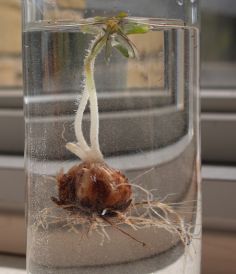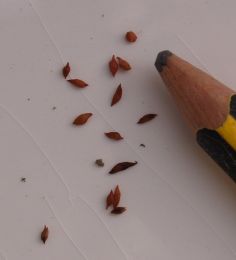- Basics
-
Propagation
- Summer Growers
- Winter Growers
- Light and Sunburns
- Oxalis dormancy
- Pests & Diseases
Bulbs, Rhizomes, Tubers
Sowing oxalis seeds
Oxalis cuttings
~ Oxalis Propagetion
As you probably have heard, oxalis can have a bad reputation, and YES some are quite invasive. I´m not goin into that, that much, but I hope these guidelines on how to propagate oxalis can be of help.
If something is missing please let me know.
~ Monica
These oxalis are generally easy to propagate and should be done while they are dormant in spring as, disturbing them while in growth, can set them back, or even causing them to die.
When planting it can sometimes be difficult to see what is up or down, so a good thing to do is if you plant them sideways, they´ll know what to do.
Bulbs and tubers;
the mother bulb will usually have offsets/bulblets that easily can be separated and replanted.
Rhizomes;
Rhizomes are divided in two
1. Scaly rhizomes, seen for example in Triangularis species.
The best thing to do here is just to break the rhizome into smaller pieces
2. Compact woody like rhizomes, for ex. Ariculata, Adenophylla and Oregana - Acetosella.
As these rhizomes can be... woody, it is easier to cut a section of, and it is ready to be planted.
Rhizomes are delicate when it comes to not being in soil, therefor if you are not able to plant them within to days, it is best to keep them in moist paper.
Oxalis propagated by seeds, is more common with the herbaceous/perennial Oxalis, such as
Oxalis corniculata, Oxalis stricta and Oxalis carnosa.
As you might have guessed these oxalis, are among the potential invasive species, but keeping an eyes open for offspring, or removing seedpods is not a difficult task.
Oxalis oregana and acetosella does also produce seeds, however fertile seeds are only possible when a cleistogamous flower - a flower that do not open and is self pollinated - is produced .
So far these woodlands species have not spread in the garden and are, for me, regarded as well behaved.
If you are lucky enough, other oxalis species can produce viable seeds. Yes it is possible under the right condition, as my articulata festival did.
Oxalis seeds can be bought trough the net, and are not difficult to germinate, that is if they are not to old. The trick is just to keep the seeds a bit moist and warm.
Water the pot well before sowing the oxalis seeds, let all access water drain out. Gently spread the seeds in the pot, and place on a warm place were it does not get direct sun.
Keep an eye on the seeds, if the soil seems a bit dry, spray with water. If you just water normally from above, the seeds can be spread to the edge of the pot... and possibly out with the water
Here we find the non-herbaceous perennial oxalis.
This simply means; woody plants which have above ground stems, that remain alive during the dormant season and grow new shoots the following year from the above ground parts.
Ex. Oxalis silver and gold, Oxalis Magellanica and Oxalis hedysaroides 'Rubra'.
Cuttings can also be made of the succulent species, such as; Oxalis gigantea, Oxalis ortgiesii or Oxalis carnosa.
As I like to keep things simple, you simply just cut a piece of the oxalis you are interested in, and plant it in some well drained potting soil.
The result is better if done during summer as plants need a soil temperature between 20-25 C/68-77 F to produce new roots.
For the succulent species be careful not to over-water after planting or they can rot.
The best thing is to water after planting, and again when the soil, not the plant, is dried.

